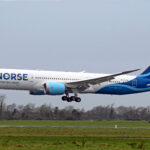In the near future, the most difficult figurine in contemporary commercial aviation will be the Airbus A330-800. It will be displacing the beautiful Mitsubishi MRJ, which had more name changes than commercial flights and passed into history without ever having known series production.
The smaller version of the 330neo cut a third of its backlog in one afternoon. And -in the quasi-miraculous event that no other customer backs out will have produced only five aircraft since its launch in 2014.
Also in 2014, Kuwait Airways closed an order for 10 Airbus A350-900s and 15 A320neo. Afterward, it changed in 2018 to 15 A320neo, 5 A350-900s, and 8 A330-800s, adding three aircraft to the original contract, but dropping the A350s and adding a cheaper widebody alternative.
Now the Middle East operator is using the same formula: Increase three aircraft, but lower the number of A350-900. And the casualties of this new realignment are the A350-900, which goes from five orders to two; and the A330-800, canceling four orders and leaving in the fleet only the two already delivered and two more still to be received.
The new order from Kuwait Airways will consist of:
- Nine A320neo (already received six)
- Six A321neo
- Three A321LRs
- Four A330-800s
- Seven A330-900s
- Two A350-900s
The move gives some respite to the A330-900. However, it almost definitively condemns the -800. This one has a firm – and unexplainable – order confirmed at the end of 2020 for Air Greenland and four for Garuda Indonesia. The last one just three months after ordering them (in March 2021) was looking to cancel them and return A330ceo to the lessors because financially it was not in the best moment. And so it goes on, for more data.
Considering the two -800s yet to be received, Kuwait Airways will have the dubious honor of being the largest operator of the variant with four aircraft, followed by Uganda Airlines with two.
A330-800: The aircraft no one needed
The mere existence of the A330-800 was always a mystery: an aircraft smaller than the -900 and with marginally greater range. In a long-haul market where more than 90% of routes can be covered well with a -900 (and split the costs between more passengers). Then the -800’s niche was questionable, to say the least.
Add to the equation an A321LR/XLR that allows extending the operating range of a single-aisle aircraft to long-haul and you form a scenario where a long-haul aircraft that is not particularly different from another except over a very specific distance and with less density than its segment competitors has an extremely low chance of survival.
The same thing is happening to the A330-900, despite the increase in orders: in August 2020 it had 226 aircraft outstanding and today that figure has reached 280. However, a good part of those orders has a significant chance of never materializing.
Ironies of fate: Air Asia X, the airline that approached Airbus asking to create an A330 with new engines, has 78 aircraft on order (it operates 2 received from Avolon) but its financial picture is simply terrible. IranAir has 28 orders but the chances of receiving them are extremely slim.
Just considering those 106 aircraft in doubt, the program is already in serious trouble. Adding the 40 orders from unidentified customers – and which have not been moving for quite some time – the outlook is not good. Even so, still far from half of the more than 1,000 330neo that Airbus planned to sell, the 330-900 has a chance.
What is clear is that the Airbus A330-800, the aircraft that was born to fill a niche that no one needed, will be a rara avis in world commercial aviation. When you see it, take a picture.
See also: Kuwait takes delivery of its first two Eurofighter Typhoons














